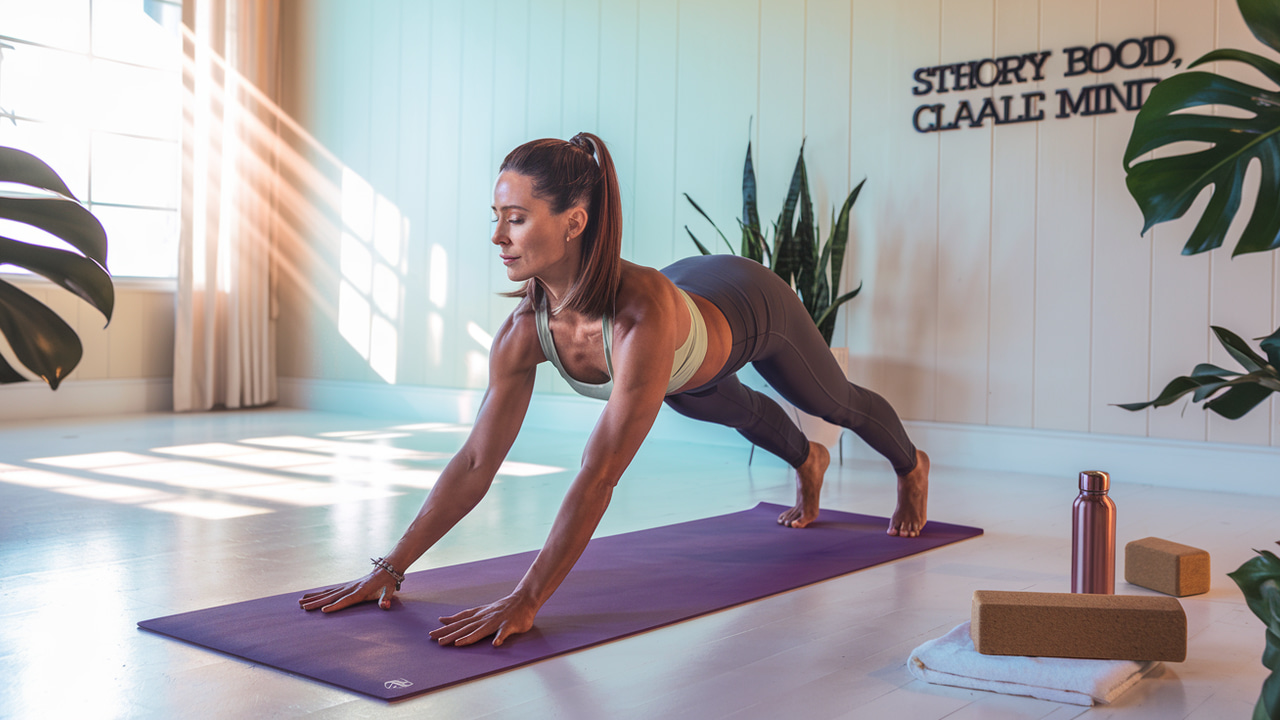
Mastering the Downward Dog for Weight Loss
Your Comprehensive Guide to Refining an Ancient Pose for Modern Weight Loss Goals
What You’ll Learn
- How to perfect your Downward Dog form to boost your weight loss journey.
- Step-by-step tips and alignment techniques to make the pose more effective.
- Strategies for integrating this asana into your daily fitness routine.
- Common pitfalls to avoid and expert tips to overcome them.
Understanding the Downward Dog Pose for Weight Loss
The Downward Dog is more than just a stretch—it’s a dynamic movement that engages multiple muscle groups. An accurate understanding of its benefits can enhance your overall workout routine. Not only does this pose support flexibility and core engagement, but its inversion element also encourages increased blood flow, leading to more effective calorie burning over time.
For more details on using complementary poses to burn calories, check out our guide to Boost Calorie Burn with Warrior II Pose.
Achieving Proper Alignment and Form
Proper alignment in Downward Dog not only maximizes its weight loss benefits but also reduces the risk of injury. Begin on your hands and knees, then step your feet back while lifting your hips upward. Maintain a flat back and evenly distribute your weight between hands and feet. Small adjustments, such as shifting the shoulder blades and engaging your core, can drastically improve your posture in the pose.
It’s crucial to be mindful of every detail; professional yogis recommend a slightly bent knee if your hamstrings are tight. For insights into complementary poses which also focus on alignment and core strength, read our article on Sculpting Abs with Plank Pose in Yoga.
Integrating Downward Dog into Your Daily Fitness Routine
Consistency is key. Incorporate the Downward Dog into your warm-up or cool-down routine to ease your muscles into a state of recovery and prepare them for additional weight loss exercises. Start with shorter holds, gradually extending the duration as your flexibility improves. Combining this practice with other calorie-torchingyoga postures can yield impressive results.
Considering linking multiple asanas? Our article on Improving Balance with Tree Pose for Weight Loss provides further insights on balancing strength and flexibility.
Avoiding Common Mistakes in Downward Dog
Many practitioners falter by overextending or misaligning various body parts in Downward Dog. Common errors include: arching the back too much, placing too much weight on the wrists, or neglecting proper foot placement. To avoid these pitfalls, maintain a focus on quality over quantity, continuously monitor your form in front of a mirror, or consider taking a session with a yoga coach.
For additional verification of proper technique, you can read trusted research on posture corrections at Healthline’s yoga guide.
Additional Support Tools and Resources
Beyond the Downward Dog, complement your practice with a mix of supplemental tools and analytical metrics. Using apps and wearable technology can provide real-time feedback, ensuring you’re continually progressing toward weight loss.
Below is a comparison table of useful tools and features to monitor your yoga practice:
| Tool/Feature | Key Benefit | User Input Capacity |
|---|---|---|
| Yoga Tracking App | Tracks daily progress and calorie burn | Customizable routines |
| Wearable Heart-Rate Monitor | Gauges exercise intensity | Syncs with fitness apps |
| Balance and Alignment Checker | Provides real-time feedback via AI | User-uploaded videos for analysis |
For a deeper dive into yoga tools and resources, consider keeping an eye on technology reviews at Yoga Journal.
Frequently Asked Questions
- What is the primary benefit of the Downward Dog in a weight loss routine?
- The pose engages multiple muscle groups and stimulates blood circulation, which aids in burning calories
and enhancing metabolism during your workout.
- The pose engages multiple muscle groups and stimulates blood circulation, which aids in burning calories
- How often should I practice Downward Dog for noticeable results?
- Integrating the pose daily or at least 3-4 times a week along with other exercises can lead to more consistent results.
- Can beginners benefit from the Downward Dog pose?
- Yes, beginners can benefit from the pose with proper modifications, such as keeping knees gently bent or using props for support.
- Is the Downward Dog effective for increasing flexibility as well as burning calories?
- Absolutely, the pose simultaneously enhances flexibility, reduces stress, and contributes to overall calorie expenditure.
- What common mistakes should I avoid in Downward Dog?
- Avoid overextending your spine or misaligning your wrists. Keeping attention on proper form ensures maximum benefit and reduces injury risk.
Recap
- Understanding: Know why Downward Dog is effective for weight loss.
- Alignment: Maintaining proper posture is crucial for preventing injuries.
- Consistency: Integrate the pose into your routine along with complementary exercises.
- Avoiding Mistakes: Focus on quality and proper technique over sheer duration.
- Support Tools: Use apps and wearable tech to track your progress and improve your form.
Next Article section
Continue exploring innovative yoga practices to complement your weight loss journey. Discover how combining dynamic asanas can promote a full-body workout that torches calories and tones muscles, perfect for a weight loss transformation. Embrace more insights on mindful exercise techniques to build strength and endurance: Boost Calorie Burn with Warrior II Pose
If you’re looking for more focused content, consider returning to our content hub for additional guidance and inspiration.
Ready to Enhance Your Practice?
Apply these expert tips to your Downward Dog routine today and experience the gradual benefits on your weight loss journey.
Don’t wait—refine your form, track your progress, and stay committed. For personalized advice or additional resources, reach out to our community.